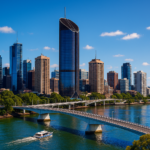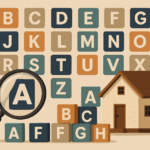
Key takeaways
Brisbane is now the second-most expensive capital city market after Sydney.
Brisbane house values have surged 76% since 2020, coinciding with the early stages of the COVID-era housing boom.
One of the biggest driving factors of the Brisbane house market has likely been the surge in demand from a shift in interstate migration, with the Greater Brisbane population growing by 9.2% over the past four years.
The rapid boost to Brisbane’s population growth at a time of constraints on housing supply is likely what led to a substantial boost in values - and urgency - in the housing market.
In May this year, the median house value across Brisbane surpassed $1 million for the first time on record – pushing the city into the exclusive million- dollar club alongside Sydney.
The median house value hit $1,006,000 in May, up from $996,000 in the previous month and $942,000 a year prior.
In June, house values continued to move higher, with the median lifting to $1,011,000.
June also marked the ninth consecutive month that Brisbane was the second-highest house market by median value of the capital cities.
While the median house value in Brisbane is still below Sydney’s, it overtook Canberra's median in October last year and Melbourne’s in June last year.
Despite taking the title of second-highest median house value, the difference between Sydney and Brisbane’s median has generally continued to rise.
The gap between Sydney and Brisbane's median house value is currently at a near-record $549,000, although this gap has reduced from a peak of 567,000 in October last year.
Meanwhile, Brisbane’s median house value sits at a near-record high of $63,000 above the Melbourne median and is about $30,000 higher than the median house value in Canberra.
Brisbane house values have seen rapid growth in the past five years, coinciding with the early stages of the COVID pandemic.
From June 2020 to June 2025, Cotality’s Home Value Index (HVI) for Brisbane houses rose 76.1%.
The median house value (which is a different measure to the HVI and only looks at the ‘middle’ of Brisbane house values) rose from $558,000 to $1,011,000 in this period.

How it happened
One of the biggest driving factors of the Brisbane house market has likely been the surge in demand from a shift in interstate migration.
Prior to 2020, the Brisbane market had experienced a long-term period of softer growth conditions - setting the market up for a more affordable starting point when the COVID housing boom arrived.
As well as initially being more affordable than Melbourne, and remaining more affordable than Sydney, Brisbane’s warmer weather and lower housing density may have presented more ‘lifestyle’ appeal during the pandemic.
Between June 2020 and June 2024, Greater Brisbane’s population grew by a substantial 9.2%, or an additional 235,000 people.

This compares to a national population growth rate of 6.0% in the same period.
Assuming an average household size of 2.5 people, this suggests additional dwelling demand of about 94,000 in Brisbane over the four-year period from population growth alone (i.e. not taking into account new households that might form from people moving out of home).
Perth had the highest population growth of the capital cities and has also seen the largest proportional increase in home values since 2020 (despite the median house value being the third-lowest of the capitals).
Dwelling completions across the entirety of Queensland were 139,000 in the same period.
Assuming a historic split of Brisbane / Rest of Queensland development, this suggests that Brisbane completions were around 88,000, at a time when household demand increased by around 94,000.
The rapid boost to population growth at a time of constraints on housing supply is likely what led to a substantial boost in values - and urgency - in the housing market.
Like most states and territories, overseas migration to Queensland has been elevated in recent years.
But the added boost to Queensland has really been from interstate migration, where an unusually large number of Australians have left the southern states, arriving in Queensland, and fewer people have moved away from the Sunshine State.
This shift in population has accompanied a virtuous cycle for the Queensland economy, which has generally outperformed in terms of job growth and state final demand.
Affordability constraints start to bite
However, the recent high in property prices means a loss in the affordability advantage it had just a few years ago and may gradually start to dissuade movers from other parts of Australia.
This affordability constraint is also reflected in a slowdown in Brisbane house value growth.
While house values lifted a solid 1.9% in the quarter, the pace of growth has slowed substantially from 3.5% in the June 2024 quarter and a high of 10.2% in the three months to November 2021.














